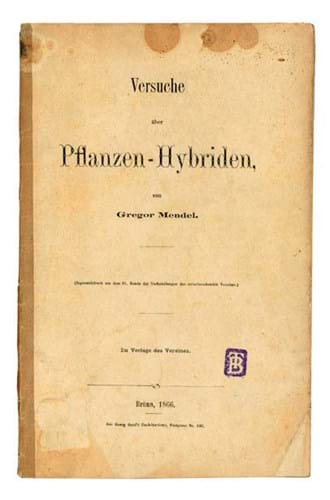
Fourteen examples are thought to survive of the 40 offprint copies he had arranged to have reprinted in 1866 from a Brünn-based scientific journal for distribution among colleagues and correspondents.
Five or six of these copies bear contemporary manuscript corrections made at Mendel’s direction by an amanuensis. Three are are now in academic libraries but at Christie’s (25/20/13.5% buyer’s premium) on July 9, as part of the Peter & Margarethe Braune collection of scientific books, one of those amended copies still in private hands was sold for a record £230,000.
The son of Moravian peasant farmers, Mendel had entered the Augustinian teaching monastery at what is today the Czech city of Brno, and though he later enrolled at Vienna University to study, it was at the monastery that he established an experimental garden. There he embarked on the years of meticulous, systematic study of pea plants that led to his discovery of ‘Mendelian ratios’.
These provided ‘a mathematical expression of the pattern of dominant and recessive hereditary traits’ that is reckoned the most significant single achievement in the history of genetics.
Despite the publication and relatively wide circulation of his paper, few, if any took much notice and his work fell into obscurity until 1900, when three independent studies reached the same conclusions.
All of those involved acknowledged that they had been preceded in their findings some decades earlier by a man who was by then a virtually unknown monk.













